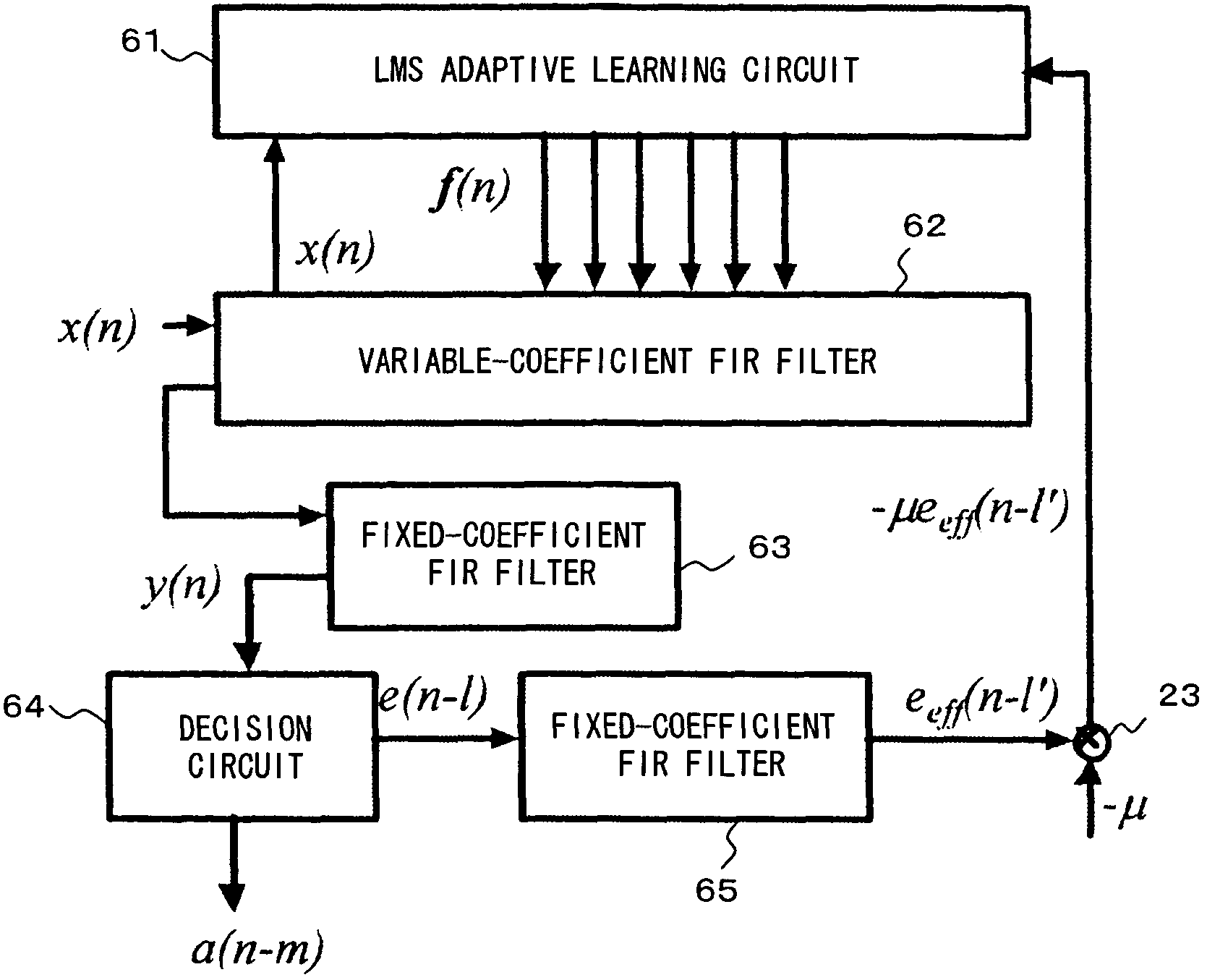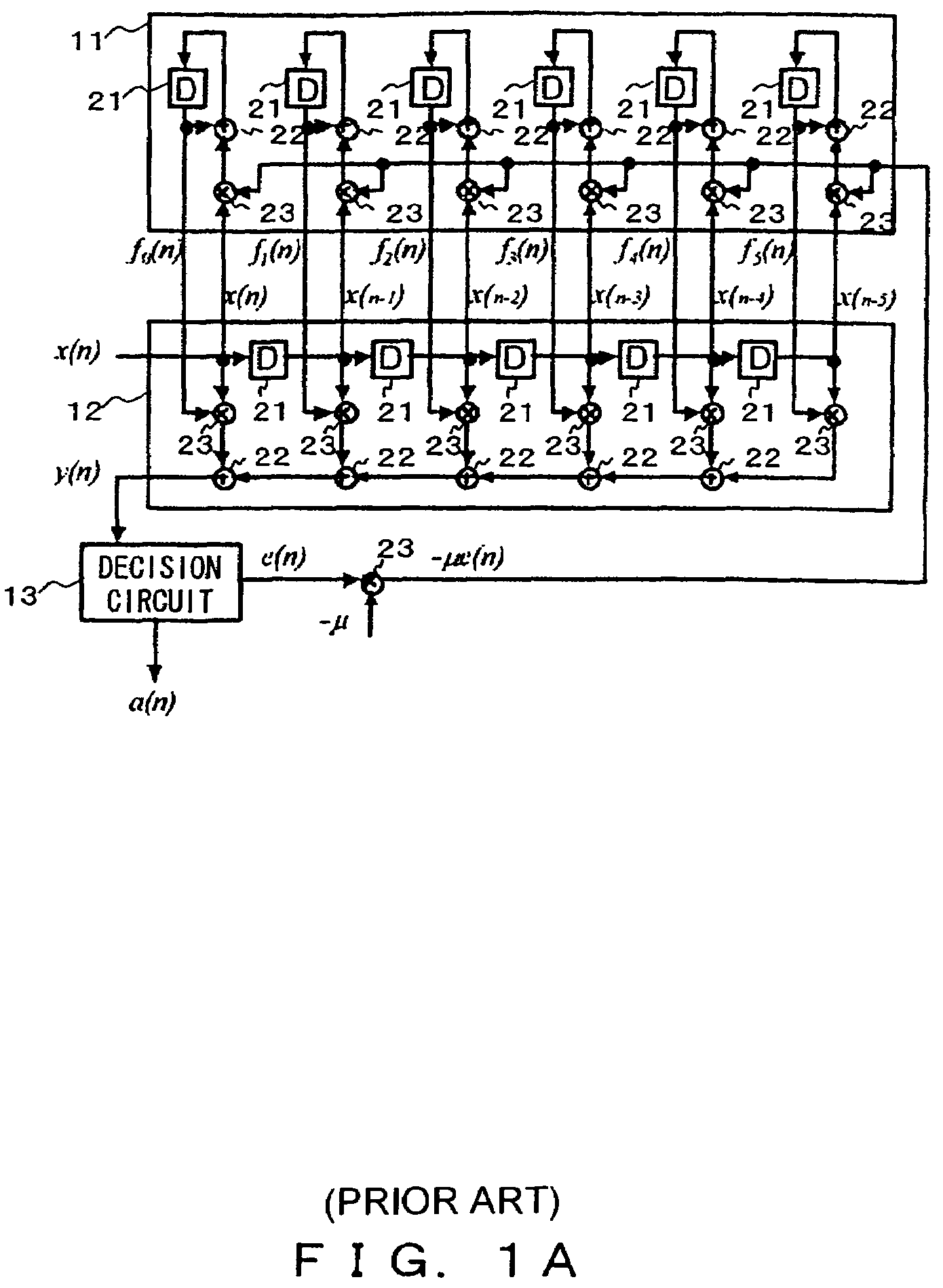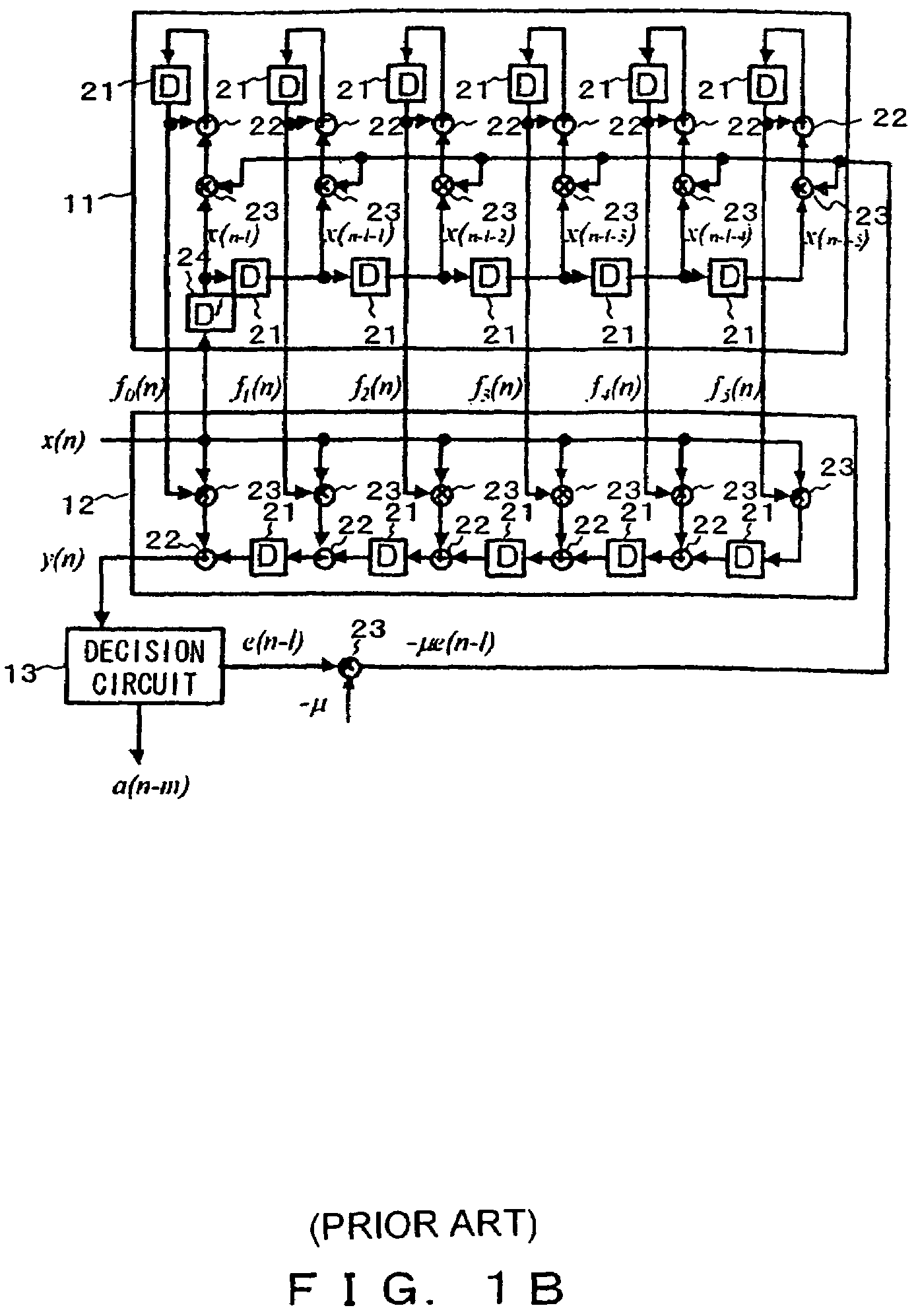Digital filter adaptively learning filter coefficient
a filter coefficient and digital filter technology, applied in the field of learning algorithm for the optimization and adaptive equalization of filter coefficients, can solve the problems of output error that cannot be simply fed back, output error of adaptive filter output cannot be obtained, and output error cannot be obtained
- Summary
- Abstract
- Description
- Claims
- Application Information
AI Technical Summary
Benefits of technology
Problems solved by technology
Method used
Image
Examples
Embodiment Construction
[0063]The preferred embodiments of the present invention are described in detail below with reference to the drawings.
[0064]In the first through third cases described above, it is considered to be preferable to minimize the expected squared error value of a signal obtained by passing the output signal of an adaptive filter through an appropriate linear filter or applying an appropriate linear operation to it. Furthermore, the present invention can also handle the combination of two or more cases by uniformly handling these cases with a wider concept and simultaneously can provide an adaptive learning algorithm for other optimization problems, which can be similarly formulated.
[0065]FIG. 2 shows the basic configuration of the digital filter of the present invention in the first and third cases. The digital filter shown in FIG. 2 comprises an adaptive filter 51, a time-invariant linear filter 52 and a learning circuit 53.
[0066]The adaptive filter 51 has coefficients that can be adapti...
PUM
| Property | Measurement | Unit |
|---|---|---|
| phase error | aaaaa | aaaaa |
| frequency | aaaaa | aaaaa |
| length | aaaaa | aaaaa |
Abstract
Description
Claims
Application Information
 Login to View More
Login to View More - R&D
- Intellectual Property
- Life Sciences
- Materials
- Tech Scout
- Unparalleled Data Quality
- Higher Quality Content
- 60% Fewer Hallucinations
Browse by: Latest US Patents, China's latest patents, Technical Efficacy Thesaurus, Application Domain, Technology Topic, Popular Technical Reports.
© 2025 PatSnap. All rights reserved.Legal|Privacy policy|Modern Slavery Act Transparency Statement|Sitemap|About US| Contact US: help@patsnap.com



